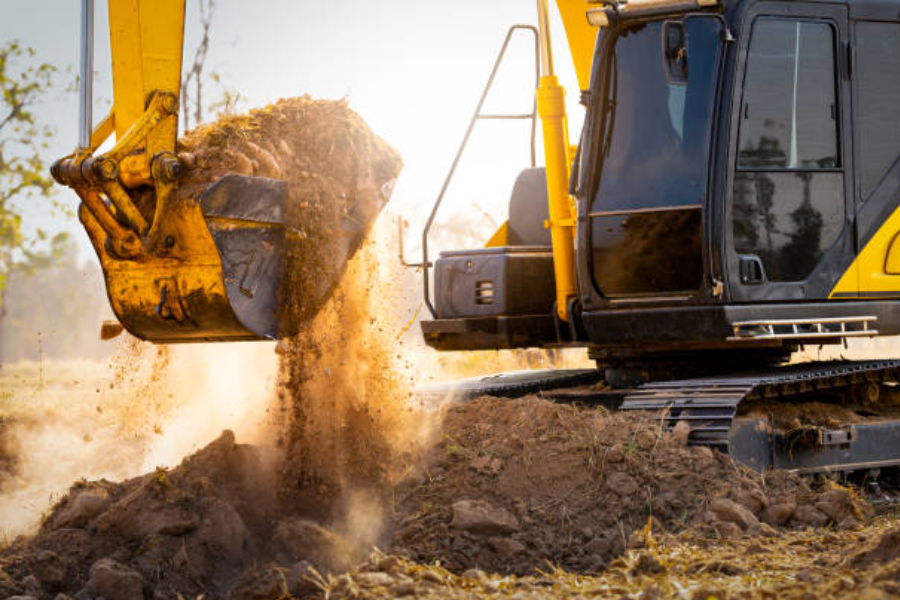Earthmoving is an essential aspect of construction and development, involving the excavation, grading, and transportation of soil and rock. While these activities are crucial for creating foundations for buildings, roads, and other infrastructure, they also carry significant environmental impacts. Understanding these impacts and implementing strategies to minimize them is vital for sustainable development.
1. Soil Erosion and Degradation
One of the most immediate environmental impacts of earthmoving is soil erosion. When vegetation is removed and soil is disturbed, the topsoil becomes susceptible to erosion from wind and water. This not only leads to the loss of fertile soil but can also result in sediment runoff, which can contaminate nearby water bodies.
Minimization Strategies:
– Erosion Control Measures: Implementing silt fences, sediment traps, and erosion control blankets can help prevent soil erosion during earthmoving operations.
– Revegetation: Promptly replanting vegetation after earthmoving can stabilize the soil and reduce erosion. Native plants are often the best choice as they are well-adapted to local conditions.
2. Water Quality Impact
Earthmoving activities can adversely affect local water quality. Sediment from disturbed areas can enter streams and rivers, leading to increased turbidity, which can harm aquatic life. Additionally, if chemicals or fuels spill during operations, they can contaminate water sources.
Minimization Strategies:
– Buffer Zones: Maintaining buffer zones of vegetation around water bodies can filter out sediments and pollutants before they enter the water.
– Water Management Plans: Developing and implementing comprehensive water management plans that include monitoring and managing runoff can help protect water quality.
3. Loss of Habitat and Biodiversity
The disruption of land due to earthmoving can lead to the destruction of habitats, putting local flora and fauna at risk. As ecosystems are altered, biodiversity can decline, impacting the resilience of local environments.
Minimization Strategies:
– Environmental Assessments: Conducting thorough environmental impact assessments (EIAs) before starting any earthmoving project can help identify critical habitats and species that need protection.
– Habitat Restoration: Post-project habitat restoration can help mitigate impacts. This may involve reintroducing native species and creating corridors for wildlife movement.
4. Air Pollution
Dust and emissions from earthmoving equipment contribute to air pollution. Dust can affect air quality, posing health risks to workers and nearby communities. Furthermore, the machinery used by an earthmoving company in Brisbane in earthmoving operations emits greenhouse gases and other pollutants.
Minimization Strategies:
– Dust Suppression Techniques: Implementing dust control measures, such as water spraying and using dust suppressants, can significantly reduce airborne particles.
– Regular Maintenance of Equipment: Keeping machinery well-maintained can minimize emissions and improve fuel efficiency. Switching to low-emission or electric machinery where feasible can further reduce air pollution.
5. Noise Pollution
Earthmoving activities often generate significant noise, which can disturb local communities and wildlife. Prolonged exposure to high noise levels can have adverse effects on human health and well-being.
Minimization Strategies:
– Noise Barriers: Installing noise barriers around work sites can help mitigate sound levels for nearby residents.
– Operational Scheduling: Limiting noisy activities to specific hours can reduce the impact on local communities.
6. Land Degradation
Earthmoving can lead to long-term land degradation if not managed properly. This includes compaction of soil, which can reduce its fertility and water infiltration capacity.
Minimization Strategies:
– Minimal Disturbance Practices: Adopting techniques that minimize soil disturbance, such as selective grading and preserving existing vegetation, can help maintain soil health.
– Soil Management Plans: Developing soil management plans that focus on maintaining soil structure and fertility during and after earthmoving activities can be beneficial.
Conclusion
While earthmoving is an essential component of construction and development, its environmental impacts cannot be overlooked. By understanding these impacts and implementing effective strategies to minimize them, it is possible to conduct earthmoving operations more sustainably. Engaging in practices such as erosion control, water quality management, habitat restoration, and pollution reduction not only protects the environment but also enhances the social responsibility of construction projects. As the industry evolves, adopting sustainable practices will be crucial for the long-term health of ecosystems and communities alike.



